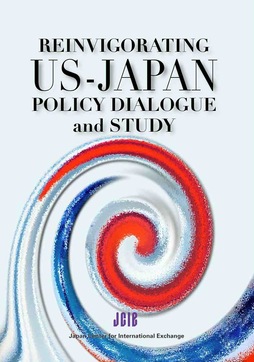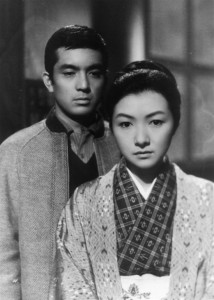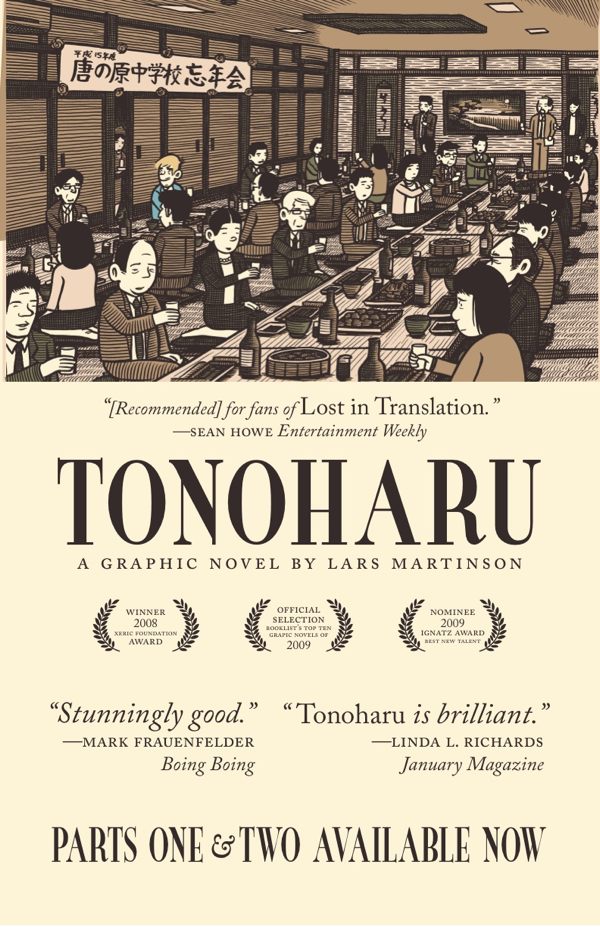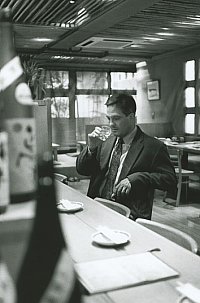WIT Life #144: Manga restrictions and contemporary art challenges
************************************************************************************
WITLife is a periodic series written by professional Writer/Interpreter/Translator Stacy Smith (Kumamoto-ken CIR, 2000-03). She starts her day by watching Fujisankei’s newscast in Japanese, and here she shares some of the interesting tidbits and trends together with her own observations.
I hope everyone had a nice Christmas celebration, whether it was with a strawberry shortcake or more traditional fare. Soon it will be time to get ready for Oshougatsu‘s toshikoshi soba and osechi ryouri! If you want to enjoy these holiday foods but not have to prepare them yourself, there are places around the city that will be offering free toshikoshi soba samples on New Year’s Eve (Village Yokocho is one), and osechi ryouri is being sold at Japanese supermarkets and by catering companies. I don’t know whether they are still accepting orders, but if you are interested it is worth checking o ut!
ut!
In other news, two articles in last week’s Wall Street Journal talked about aspects of Tokyo’s art and pop culture scenes. One discussed how the city government is attempting to restrict sales of manga with “extreme” depictions of sex. This ordinance originated with conservative governor Shintaro Ishihara, but has been openly opposed by Prime Minster Naoto Kan. Motivating Kan’s critical stance is the fact that several manga artists and 10 major publishers have said that they will boycott the huge Tokyo International Anime Fair scheduled to take place in March. On his blog he wrote, “Upbringing of youth is an important matter. But at the same time, it’s also important to Read More
WIT Life #143: SoHo Host Club
WITLife is a periodic series written by professional Writer/Interpreter/Translator Stacy Smith (Kumamoto-ken CIR, 2000-03). She starts her day by watching Fujisankei’s newscast in Japanese, and here she shares some of the interesting tidbits and trends together with her own observations.
I knew that there were a few hostess clubs floating around the city, but I was not aware of the existence of any host clubs. That is until I attended the Winter Solstice Wonderland event last night hosted by none other than New York’s very own SoHo Host Club! I have never visited a host club in Japan, so was not sure what to expect, but this group is inspired by the Japanese anime Ouran High School Host Club. The six hosts present ranged in age from 18-31, and all were dressed in suits and looked quite dapper.
The host taking care of our table was 25-year old Salvatore Torres, and he impressively remembered all of our individual tea selections and kept our cups filled. Evidently in the original anime most social events revolve around tea and sweets, but the event last night was Read More
Op-ed on natural gas development by JET alum
![]() JET alums continue to make their voices heard. Here’s a recent opinion article by New York-based alum Sam Lederer (Shizuoka-ken, 2005-07), a Contributor at Americans for Energy Leadership, on the importance of better regulation over natural gas exploration in the U.S.
JET alums continue to make their voices heard. Here’s a recent opinion article by New York-based alum Sam Lederer (Shizuoka-ken, 2005-07), a Contributor at Americans for Energy Leadership, on the importance of better regulation over natural gas exploration in the U.S.
CLICK HERE to read some of Sam’s other writings on Japanese energy and environmental policy.
Sam can be reached via his LinkedIn profile and can be followed via Twitter @samlederer
WIT Life #142: Fair Play Committee
WITLife is a periodic series written by professional Writer/Interpreter/Translator Stacy Smith (Kumamoto-ken CIR, 2000-03). She starts her day by watching Fujisankei’s newscast in Japanese, and here she shares some of the interesting tidbits and trends together with her own observations.
I don’t make a habit of reading the obituaries, but one in yesterday’s NYT caught my eye as it was entitled, “Frank Emi, Defiant World War II Internee, Dies at 94.” It told about the life of this Japanese- American who was imprisoned during the war and refused to serve when drafted in 1944. He was being held at the Heart Mountain Relocation Center in the northwest Wyoming desert, and he and six other internees there formed the Fair Play Committee in response to this order. Their rally cry was “No more shikata ga nai,” which had been the prevalent attitude until that point.
This committee stated that they would serve only when their rights as American citizens were fully restored. They tried to take their case to court, but these resisters were criticized by Read More
 Did you or your friends write or hear any songs about your JET experience, your town, your region, or anything JET-related?
Did you or your friends write or hear any songs about your JET experience, your town, your region, or anything JET-related?
We know a bunch of songs have been written by some number of the 50,000+ JET alumni over the 23 years of the JET Program. Now it’s time to try and gather them together in one place.
E-mail your songs to jetwit [at] jetwit.com or input them right into the comments section of this post. Whatever works for you. And if you have a recording or a video of the song being performed, then share that as well.
To start things off, here are some song lyrics about Saga-ken by a Japanese comedian translated into English by a JET.
Report: “Reinvigorating US-Japan Policy Dialogue and Study” and implications for JET
 There’s a very JET-relevant report just published by the Japan Center for International Exchange titled “Reinvigorating US-Japan Dialogue and Study.” (Notably, JET alum Jim Gannon (Ehime-ken, 1992-94), Executive Director for the US office of JCIE, was involved in the drafting of the report.)
There’s a very JET-relevant report just published by the Japan Center for International Exchange titled “Reinvigorating US-Japan Dialogue and Study.” (Notably, JET alum Jim Gannon (Ehime-ken, 1992-94), Executive Director for the US office of JCIE, was involved in the drafting of the report.)
Though the report only mentions the JET Program once (on page 33 of the report), it’s clear that the still largely untapped resource that is the JET alumni community of over 50,000 worldwide (25,000+ in the US) has the potential and the ability to play a significant role in US-Japan relations going forward given the decline in energy and resources devoted to US-Japan policy dialogue and study cited in the report.
The gist of the report is that “the institutional base of US-Japan policy dialogue and study has started to erode in recent years.” However, the report also “finds fertile ground to deepen bilateral dialogue and better leverage the extensive human networks that have developed between the two societies.”
The main obstacles to reversing this trend appear to be:
- a shrinking institutional base for US-Japan relations and failure to fully take advantage of available resources (e.g., the JET alum community);
- reduced funds available in Japan to support these activities (due in a large part to a down economy); and
- to some extent, increased interest in and focus on China
As JET alums, the above trends may be beyond our control. But we are a big part of that extensive human network that needs to be leveraged. And regardless of the obstacles, the ball is in our court to be part of the solution. Tough times call for innovative solutions.
Gambarimashou.
WIT Life #141: 今年の漢字
WITLife is a periodic series written by professional Writer/Interpreter/Translator Stacy Smith (Kumamoto-ken CIR, 2000-03). She starts her day by watching Fujisankei’s newscast in Japanese, and here she shares some of the interesting tidbits and trends together with her own observations.
The end of the year is upon is, which means that it is time for 今年の漢字 (kotoshi no kanji) or the kanji of the year. It is selected by popular ballot and is supposed to represent the events of 2009. The announcement was made this weekend at Kyoto’s Kiyomizu Temple, and the winner with 14,537 votes was 暑 (sho) or hot. According to Daily Sun, the reason this character was chosen was due to average temperatures this summer hitting historical highs (and many people getting heat stroke as a result) and for the 33 Chilean miners who survived the mine’s hot conditions.
This year had the most cumulative votes ever with 285,406, and the 2nd and 3rd place picks were Read More
WIT Life #139: 60′s Japan film festival
WITLife is a periodic series written by professional Writer/Interpreter/Translator Stacy Smith (Kumamoto-ken CIR, 2000-03). She starts her day by watching Fujisankei’s newscast in Japanese, and here she shares some of the interesting tidbits and trends together with her own observations.
On Friday night I attended a free screening of the movie Yearning, which was being shown as part of the Japanese Cinema 1960’s film series at Asia Society. This organization is co-sponsoring the event along with Japan Foundation, and they have been offering complimentary tickets to the five films that were being shown over a span of a little over a month. You had to sign up ahead of time by indicating which film you wanted tickets for and officially you could only pick one, but when I went there was a stand-by line so if you go early on the day of the show you are likely to get in even without tickets.
Although Yearning was the English title of the movie, it came from the Japanese title of 乱れる (midareru), literally meaning Read More
James Kennedy reviews “Pluto killer” book for Wall Street Journal
James Kennedy (Nara-ken, 2004-06), author of the acclaimed young adult novel The Order of Odd-Fish, has a great review in the Wall Street Journal of a sugoku omoshiroi book titled, How I Killed Pluto, And Why It Had It Coming by professor of astronomy Mike Brown.
Here’s the link: http://online.wsj.com/article/SB10001424052748704243904575630683559145518.html#articleTabs%3Darticle
Write for Ibuki Magazine? Book ideas for Chin Music Press?
After running a “Culture Spreaders” post on MEF Bruce Rutledge a couple weeks ago, Bruce sent the following response:
“Wow. This was a pleasant surprise. Thanks for the accolades!
I encourage anyone interested in writing about Japan to get in touch. We’re looking for contributors to Ibuki (stories should have a Pacific Northwest hook) and book ideas for Chin Music.
You can reach us at speak [at] chinmusicpress.com. JET alums Jessica Sattell and Joshua Powell are on our staff.”
WIT Life #138: Kaikai and Kiki Thanksgiving Parade Debut
WITLife is a periodic series written by professional Writer/Interpreter/Translator Stacy Smith (Kumamoto-ken CIR, 2000-03). She starts her day by watching Fujisankei’s newscast in Japanese, and here she shares some of the interesting tidbits and trends together with her own observations.
Happy Thanksgiving to everyone! And for those of you are who are on the Japanese calender, I hope you had a relaxing 勤労感謝の日(kinrou kansha no hi or Labor Thanksgiving Day) this past Tuesday. Though there is no turkey or cranberry sauce on this Japanese holiday, it resembles our Thanksgiving in that it is an occasion to commemorate labor and production and give one another thanks.
This year’s Macy’s Thanksgiving Day Parade has a new addition from Japan, balloons of artist Takashi Murakami’s Kiki and Kaikai creations. They are following in the footsteps of Read More
Op-ed on U.S. energy policy by JET alum
![]() JET alums are indeed everywhere. Here’s a recent opinion article by New York-based alum Sam Lederer (Shizuoka-ken, 2005-07), a Contributor at Americans for Energy Leadership, on potential directions in U.S. energy policy for the “lame-duck” session of the U.S. Congress.
JET alums are indeed everywhere. Here’s a recent opinion article by New York-based alum Sam Lederer (Shizuoka-ken, 2005-07), a Contributor at Americans for Energy Leadership, on potential directions in U.S. energy policy for the “lame-duck” session of the U.S. Congress.
CLICK HERE to read some of Sam’s other writings on Japanese energy and environmental policy.
Sam can be reached via his LinkedIn profile and can be followed via Twitter @samlederer
Lars Martinson interviewed in Hero Magazine re “Tonoharu: Part 2”
 There’s a nice interview with JET alum Lars Martinson in Hero Magazine. Lars recently published Tonoharu: Part 2, a graphic novel about teaching English in Japan that follows up on the success of Tonoharu: Part 1.
There’s a nice interview with JET alum Lars Martinson in Hero Magazine. Lars recently published Tonoharu: Part 2, a graphic novel about teaching English in Japan that follows up on the success of Tonoharu: Part 1.
Here’s the link to the article: http://heromagazine.org/?p=189
Culture Spreader: John Gauntner – The Sake Guy
 Culture Spreaders is a new feature intended to shine a spotlight on JET alums involved in spreading and sharing Japanese culture in their home countries. If you know of a good JET alum for a future post, just e-mail jetwit [at] jetwit.com tell us why you think that alum is a Culture Spreader. (Self-nominations welcome too.)
Culture Spreaders is a new feature intended to shine a spotlight on JET alums involved in spreading and sharing Japanese culture in their home countries. If you know of a good JET alum for a future post, just e-mail jetwit [at] jetwit.com tell us why you think that alum is a Culture Spreader. (Self-nominations welcome too.)
JET alum and leading sake expert John Gauntner (aka “The Sake Guy“) has established himself as the leading non-Japanese sake expert in the world. See, e.g., this 2009 Japan Times article titled, “Nihonshu evangelist preaches heady mix of culture, taste.”
Not only does John spread the sake gospel through numerous appearances and events in the U.S. and elsewhere, but he also offers a Sake Professional Course in various locations to teach others how to be sake experts and evangelizers. As a result, there are now four sake-only specialist shops in the U.S.–True Sake (San Francisco), Sakaya (NYC), SakeNomi (Seattle) and The Sake Shop (Honolulu)–and the owners of all four attended John’s Sake Professional Course for the purpose of starting their respective businesses.
For his work spreading Japanese sake culture around the globe (and helping the Japanese sake industry expand its markets), John Gauntner is hereby recognized by JetWit as a serious “Culture Spreader.”
Editor’s note: In the “JET’s a small world” department, it turns out that both John Gauntner and last week’s “Culture Spreader” Bruce Rutledge are both originally from Cleveland and previously have met at SakeNomi in Seattle, where Bruce currently lives.
JetWit Diary 10.21.10
JetWit Diary is a new feature by Steven Horowitz (Aichi-ken, 1992-94), founder and publisher of JetWit. Steven is available on a consulting basis to assist organizations with any membership building, social media consulting, creative communications and writing needs.
There’s a lot going on in the JetWit (i.e., JET and JETAA) world right now. New ideas. New information. New projects. New people.
Seattle
I had a great trip to Seattle, primarily to visit JET alum friends (and take in the JETAA Pacific Northwest Happy Hour). I reconnected with former PNW Newsletter Editor Liz Sharpe, former PNW officers Ryan Hart and Shun Endo, and current President Sandra Sakai. Also got to meet a lot of new people, and even JetWit contributor, Stephanie Boegeman, whom I’d never met in person and who is heading to Cambodia to work for JET alum-founded PEPY Tours). As a chapter, PNW very much has their unchi together. e.g., At the happy hour, they had a staff of 2 or 3 alums manning a spreadsheet on a laptop, taking everyone’s orders and keeping track of who owed what so that the bill worked out right in the end.
I also learned that the Kobe-Seattle sister city relationship is strong, and that despite the reduction in Aichi prefectural JETs, Hyogo-ken is still a big supporter of JET and perhaps a good model of how to really extract value from JET and from sister city relationships. In fact, there’s a Hyogo Business & Cultural Center in Seattle that typically employs a JET alum. (Currently it’s Ben Erickson who also serves as PNW’s Webmaster.)
Sister Cities
Speaking of sister cities, I recently spoke with Laura Giroux, Membership Director of Sister Cities International (based in D.C.) The conversation came about thanks to Carlo Capua, a Fort Worth, TX-based JET alum who is on the Board of SSI and who got in touch after seeing the JET-Sister Cities List Project on JetWit. The purpose was to learn more about SSI and see if there’s any potential for collaboration with the JET alum community. But in the process, I gained some historical perspective on sister cities from Laura.
Did you know that the first ever sister city relationship was apparently formed in the 1930s between Toledo, Ohio and Toledo, Spain? Also, SSI was formed thanks to President Eisenhower who, following WWII, pushed for grassroots cultural exchanges especially among the Axis Powers (Japan, Germany and Italy) which led to the creation of SSI as well as many other sister city relationships in those countries. As many of us have noticed, Japan in particular really took to the sister city concept.
FYI, the potential for collaboration with JET alumni may lie in the fact that sister city relationships often involves the over-60 set who have time to maintain the relationships and high school students who have time to go on exchanges. As a result, it sounds like energy from internationally-minded folks in the 23-to-50 age range could be beneficial in some form. Just something to tuck away in your brain for future use and ideas generation.
State of JET
The reason I’ve been focused on the sister city relationships is because it’s becoming clear that one of the key links to sustaining JET lies in identifying its value to Japanese local governments. Based on feedback from knowledgeable sources, I’ve heard that the value of JET has been strongly recognized at the central government level. The JETAA USA press release, the series of op-eds in the Japanese media (including one by JET alums Jim Gannon, Michael Auslin and Paige Cottingham-Streater), pressure perhaps from the U.S. State Department and general common sense of have merged to make key political constituencies aware of how significant a role JET has played and continues to play in US-Japan relations.
That said, there remain long-term concerns about JET’s survival. And attrition at the local level figures as a major one of those concerns.
JET-Visitors Tally Project
In addition to the JET-Sister Cities List Project, another upcoming JetWit project aimed at the JET-local government relationship will be the “JET-Visitors Tally Project.” (That project name is not set in stone, btw.) The gist of the project is that JETs are directly responsible for some amount of tourism revenue for Japan given that most of us had family and friends visit them in Japan. Hence, JETs have been directly responsible for significant tourism dollars (or rather, yen) pouring into Japan’s economy. And this tourism income, as far as I can tell, is not being factored into any cost-benefit analysis or discussion of the JET Program or JETAA.
So, working off an idea raised by Dennis Li (an officer of the Texoma JETAA chapter) at this year’s JETAA USA Conference in NYC in August, this project will invite JETs and JET alums to tell us how many people (and “people-days”) they have been directly responsible for bringing to Japan. The result will be a minimum estimated amount of tourism revenue that JET has generated for Japan. So start reaching back into your visitor memories and stay tuned for the official announcement.
JetWit Funding
And lastly, it’s time to have a potentially uncomfortable discussion about money.
In a nutshell, for the last 3+ years I’ve been building JetWit as a free resource for the JET and JET alumni community. This has all been an extremely enjoyable labor of love. But I’m at the point where I need to start generating enough revenue to justify the time I’ll need to continue spending. (And ideally to be able to pay other key contributors at some point.)
I’m going to put up a more detailed post about this in the near future. But I believe to make JetWit continue to work and grow, the 3 most likely sources of revenue, and the 3 ways you can potentially help are:
1. Direct member contributions – If you think JetWit is a public good worth supporting and that you’d like to see continue to exist, please feel free to contribute via PayPal.
2. Advertising– Advertise your business or services on JetWit. Or introduce JetWit to businesses likely to advertise. (Contact information for a specific person at a company is always helpful.) JetWit has become the de facto central source of JET-relevant information, original content and job listings, is read by key people at CLAIR, the Consulates and MOFA and gets over 13,000 hits/month. Pretty good demographic, right?
3. Grants – Do you know of a grant or foundation that would be a good fit for JetWit? Even better, can you help put a proposal together?
I’m always open to ideas, suggestions and experimenting. So feel free to get in touch with ideas and suggestions or just to brainstorm.
********
Here’s wishing JetWit readers a Happy Thanksgiving (and a belated Happy Thanksgiving for our Canadian readers). I should mention that I’ll be in Tampa, FL around Christmas time and will be looking to meet up with folks from the JET alum community down there on Dec 26 or 27. So get in touch if by any chance you’ll be nearby at that time.
Yoroshiku onegaishimasu,
Steven Horowitz (Aichi-ken, 1992-94)
Brooklyn, NY
jetwit [at] jetwit.com

